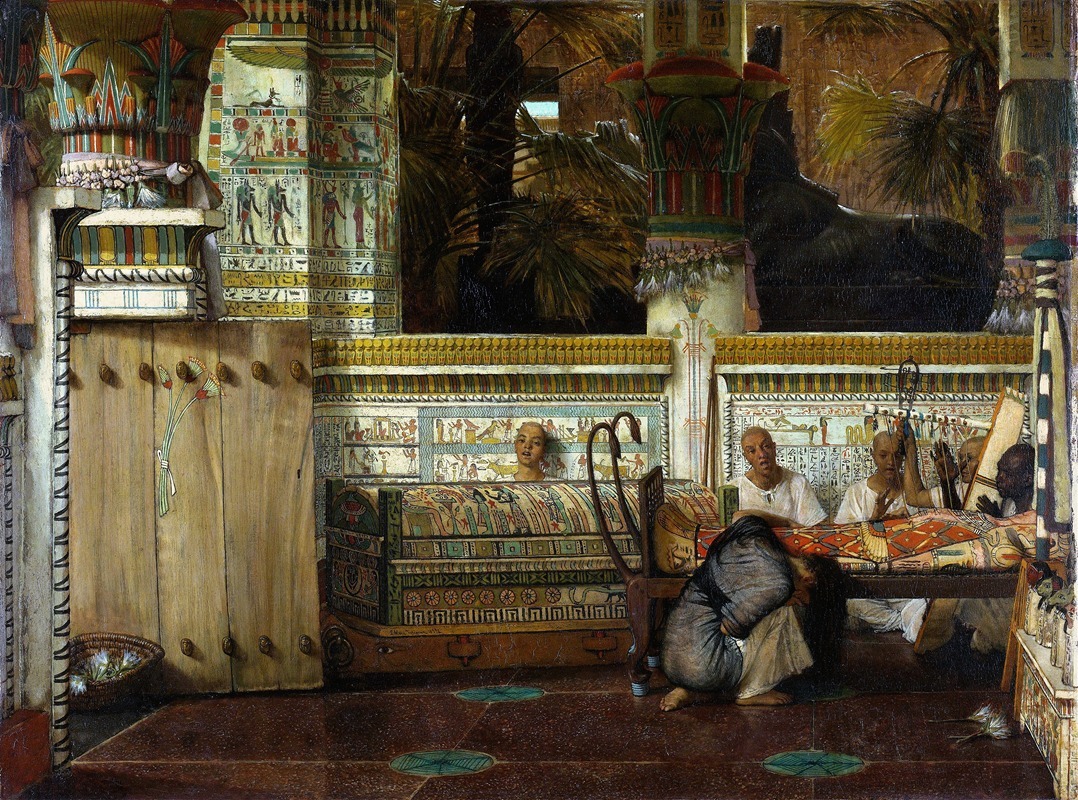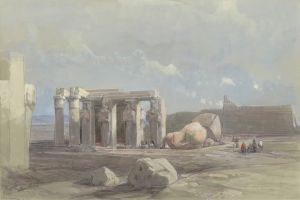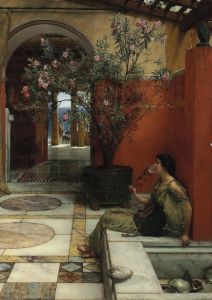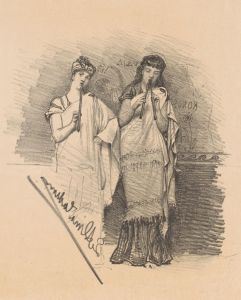
The Egyptian Widow
A hand-painted replica of Lawrence Alma-Tadema’s masterpiece The Egyptian Widow, meticulously crafted by professional artists to capture the true essence of the original. Each piece is created with museum-quality canvas and rare mineral pigments, carefully painted by experienced artists with delicate brushstrokes and rich, layered colors to perfectly recreate the texture of the original artwork. Unlike machine-printed reproductions, this hand-painted version brings the painting to life, infused with the artist’s emotions and skill in every stroke. Whether for personal collection or home decoration, it instantly elevates the artistic atmosphere of any space.
"The Egyptian Widow" is an oil painting created by the renowned Dutch-British artist Sir Lawrence Alma-Tadema in 1872. Alma-Tadema is celebrated for his meticulously detailed depictions of classical antiquity, and this painting is a prime example of his fascination with ancient cultures, particularly that of Egypt.
The painting portrays a poignant scene of mourning in ancient Egypt. At the center of the composition is a young widow, dressed in traditional Egyptian attire, seated beside the sarcophagus of her deceased husband. Her posture and expression convey a deep sense of sorrow and loss. The setting is an elaborately decorated tomb, with hieroglyphics and intricate carvings adorning the walls, which Alma-Tadema rendered with great attention to historical accuracy.
Alma-Tadema's interest in Egyptology was part of a broader 19th-century fascination with ancient Egypt, spurred by archaeological discoveries and scholarly research. His works often reflect a blend of historical knowledge and artistic imagination, aiming to bring the ancient world to life for contemporary audiences. In "The Egyptian Widow," he combines his academic interest with his skill in capturing human emotion, creating a scene that is both historically informative and emotionally resonant.
The painting is notable for its use of light and color. Alma-Tadema employs a soft, diffused light to enhance the somber mood of the scene. The cool tones of the widow's garments contrast with the warm hues of the tomb's interior, drawing the viewer's eye to her figure and emphasizing her isolation in her grief. The meticulous detail in the depiction of the tomb's artifacts and the widow's attire showcases Alma-Tadema's dedication to authenticity and his ability to create a richly textured visual narrative.
"The Egyptian Widow" is part of the collection of the Rijksmuseum in Amsterdam, where it continues to be appreciated for its artistic and historical significance. The painting exemplifies Alma-Tadema's mastery in blending historical detail with emotional depth, making it a valuable piece for both art historians and general audiences interested in the visual culture of the 19th century and the ancient world.
In summary, "The Egyptian Widow" by Lawrence Alma-Tadema is a masterful representation of mourning in ancient Egypt, characterized by its historical accuracy, emotional depth, and exquisite detail. It remains a significant work in the oeuvre of Alma-Tadema and a testament to his enduring fascination with the ancient world.





![The Great Sphinx, Pyramids of Gizeh [Giza]. July 17th, 1839.](/imgs/217557/s/david-roberts-the-great-sphinx-pyramids-of-gizeh-giza-july-17th-1839-98f269c8.jpg)












